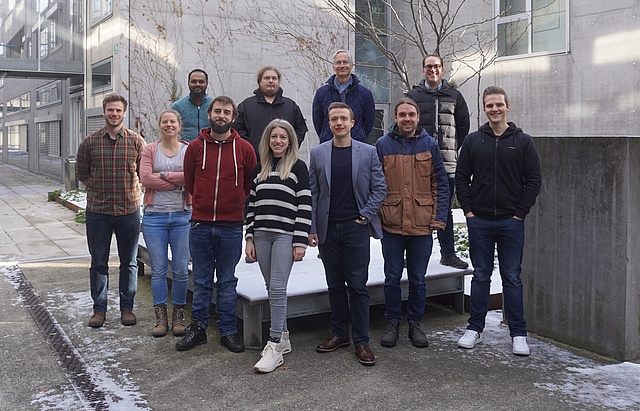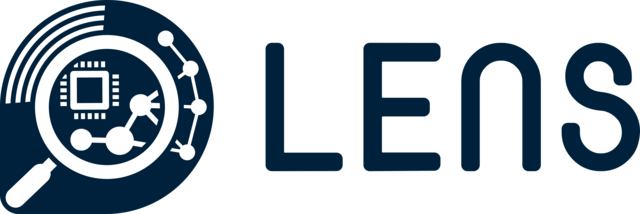"Low-power Embedded Networked Systems" Group
The Low-power Embedded Networked Systems (LENS) group is a team of researchers focusing on future connected wireless embedded systems, aiming to make them more dependable and sustainable. The team's activities can be broadly characterized as "systems and application-driven experimental research" at the intersection of wireless networking, embedded systems, and IoT applications. Among others, the group works on the design principles, optimization methods, and tools necessary to network resource-constrained wireless devices -- which are the basis for the Internet of Things -- in a reliable yet energy-efficient manner.
In the few years since its foundation (2016), the LENS group, led by Assoc.Prof. Dr. Carlo Alberto Boano, has distinguished itself internationally for the scientific excellence of its research on low-power wireless networks and IoT research. More than 25 papers have been published at leading/excellent conferences (i.e., rated CORE A/A*) and more than 20 awards have been received (including numerous best paper/demo/poster/artifact awards). The group has supervised 6 successful PhD theses and over 40 Master's and Bachelor's theses; in total, more than 100 scientific contributions have been published (full list), many of them in collaboration with academic and industrial partners. The research results of the LENS group led to patents as well as to the foundation of a company (DEWINE Labs GmbH) by former group members. Moreover, the group has been involved in several third-party funded national, European, and international projects, and is also internationally renowned for its open benchmarking infrastructures (such as D-Cube), which have been used to organize competitions quantitatively comparing the performance of state-of-the-art low-power wireless systems.
Group members

Alumni

Visitors

Assoc.Prof. Dr. Carlo Alberto Boano
Institute of Technical Informatics
VCard - Personal Website
- Besides the currently-advertised positions, we are always looking for talented and motivated PhD students / Postdoc researchers with solid experience on our research topics that are interested in joining our group: if you want to shape the future of embedded wireless IoT systems, and make them more dependable, contact us!
- 06.02.2025: Markus Schuss gave a lecture on testbed experimentation and benchmarking at the 1st European Mobile Systems Winter School: 'Hands-on AI and Mobile Systems: Research and Practice' in Como!
- 03.02.2025: The APEX framework created by H. Hydher has now been open-sourced to the community!
- 30.01.2025: Ahmed Ahmed has successfully defended his MSc thesis entitled "Enabling Dependable BLE Applications Involving Android- and iOS-Powered Smartphones" carried out in cooperation with Dewine Labs, congratulations!
- 15.01.2025: Our recent work on UWB systems has been presented at Mäladardalen and Uppsala University!
- 13.12.2024: The EWSN'24 conference, in whose organization our group was largely involved, was a blast!
- 06.12.2024: Our article on about intelligent noise mapping for smart cities in collaboration with colleagues from the Nanjing Agricultural University and SKF group is now appearing in the IEEE Communications Magazine!
- 25.11.2024: Hannah Brunner successfully defended her PhD thesis 'Towards a Scalable and Sustainable Internet of Things' with distinction: congratulations!
- 12.11.2024: Our paper on correcting NLoS-induced ranging UWB errors in cooperation with Pro2Future and NXP Semiconductors has received the best paper award at the WMNC'24 conference!
- 07.11.2024: Our paper on concurrent transmissions over UWB complex channels was accepted and presented at the flagship ACM SenSys'24 conference!
- 22.10.2024: Our paper on adaptive TX power control in BLE has received the best paper award at the WiMob'24 conference!
- 01.10.2024: Dženita Džafić joins our group as a PhD student: welcome!
- 15.09.2024: Our paper on BACON, presenting a method to improve broadcast audio authentication in BLE systems developed in collaboration with colleagues from the University of Pisa, will be presented at IEEE MILCOM'24!
- 29.08.2024: Our paper on E-Cube, a benchmarking facility of battery-free systems used to organize the EWSN'24 Sustainability Competition has been accepted and will be presented at GoodIT'24!
- 28.07.2024: Our paper on modelling and comparing converter architectures and energy harvesting ICs for battery-free systems has been accepted and will be presented at IEEE MASS'24!
- 27.06.2024: Pei Tian, who visited our group between October 2021 and October 2023 and published several joint papers, has successfully defended her PhD thesis entitled "Research on Performance Optimization of LoRa-based Multi-hop Low Power Wide Area Networks". Congratulations, Dr. Pei!
- 24.06.2024: Marcel Maderecker has successfully defended his MSc thesis entitled "Implementation of a Radar-based Person Detection System for Access Gates" carried out with us, congratulations!
- 15.05.2024: Our paper on a simulation framework for battery-free systems in collaboration with colleagues from TU Delft has been presented at IPSN'24 and received the best artifact award!
- 08.04.2024: Markus Schuss will co-organize the EWSN 2024 Sustainability Competition, and the competition infrastructure will be hosted by our group: check out the call for competitors!
- 26.03.2024: Our article on understanding concurrent radiative wireless power transfer in collaboration with colleagues from the Macau University of Science and Technology, Nanjing University, and SKF group has been accepted on the IEEE Wireless Communications Magazine!
- 21.03.2024: Sebastian Scholl has successfully defended his MSc thesis entitled "Modelling and Exploring Sensor Node Architectures for a Battery-Free Internet of Things" carried out with us, congratulations!



























